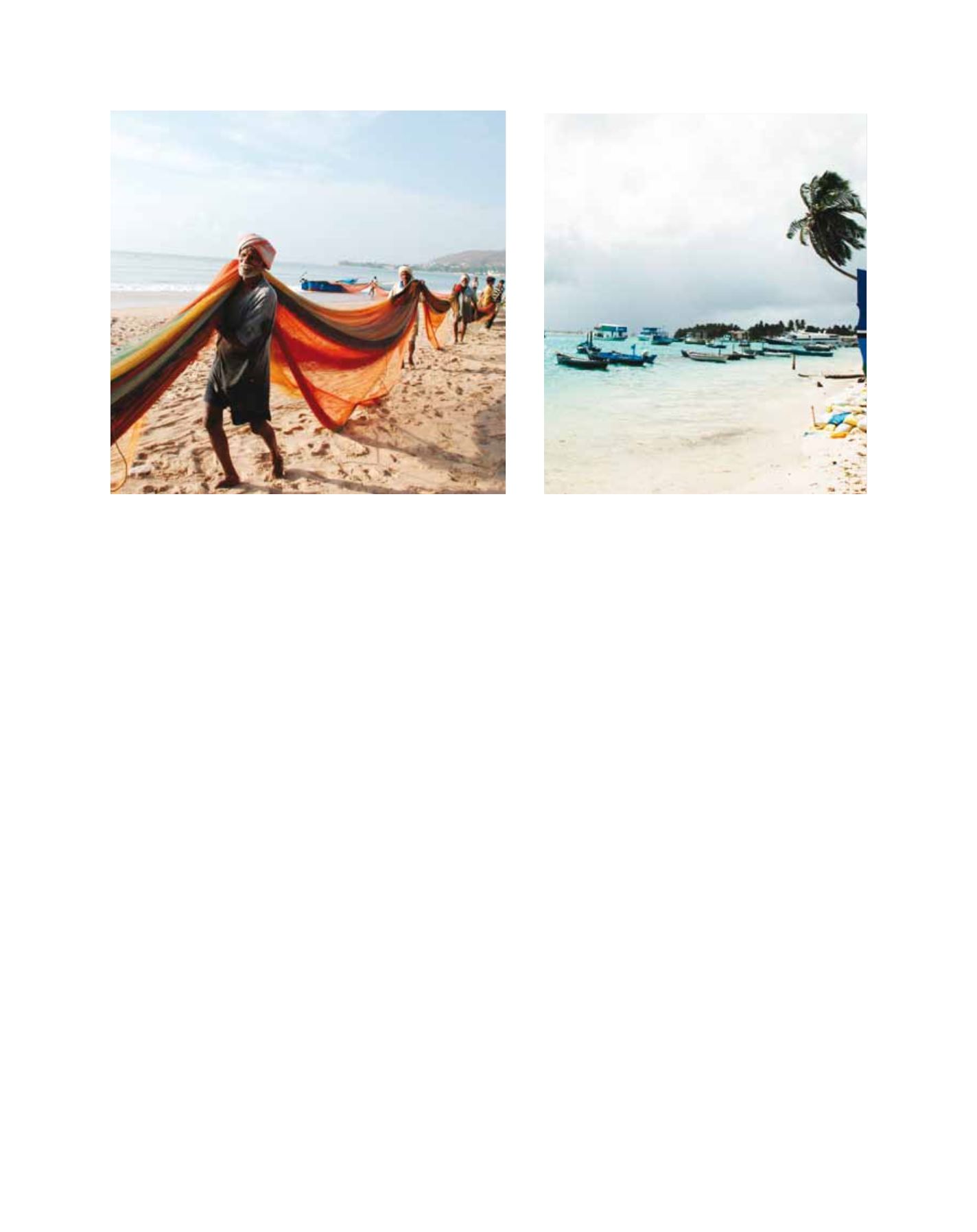

[
] 67
climate change differently and the overall change may remain
unpredictable.
For example, the oil sardine
Sardinella longiceps
and the Indian
mackerel
Rastrelliger kanagurta
accounted for 21 per cent of the
marine fish catch in 2006. These small pelagics, especially the oil
sardines, have been known for restricted distribution – between
latitude 8
o
N and 14
o
N and longitude 75
o
E and 77
o
E (Malabar
upwelling zone along the southwest coast of India) where the
annual average SST ranges from 27 to 29
o
C. Until 1985, almost
the entire catch was from the Malabar upwelling zone and there
was little or no catch from latitudes north of 14
o
N. However,
during the last two decades, with the warming of waters in lati-
tudes north of 14
o
N (by 0.04
o
C per decade), the oil sardine is
moving to northern latitudes. It has also been found that catches
from the Malabar upwelling zone have not gone down. This infers
that the oil sardine fishery is extending northward, not shifting
northward.
In a similar way, the study also shows that the Indian mackerel
is found to be extending northwards. However, besides exploring
northern waters, the Indian mackerel has been descending deeper
as well during the last two decades. The species normally occupies
surface and sub-surface waters. During 1985-89, only two per cent
of the mackerel catch was from bottom trawlers, the remainder was
caught by pelagic gear. However, during 2003-2007 an estimated
15 per cent of the mackerel has been caught by bottom trawlers,
indicating that mackerel has been extending deeper and downward
as well.
Hilsa, the national fish of Bangladesh, accounts for 13-14 per cent of
the total fish production of the country. During the last two decades,
hilsa production from inland waters has declined by about 20 per
cent, whereas a threefold increase is seen in the yield from the marine
waters. Scientists are attributing this shift to climatic aberrations
occurring during the last decade or so.
However, one of the biggest challenges will be
dealing with rising sea level and coastal erosion.
Erosion due to sea level rise in the region is estimated
to be 7,125m
3
per year, implying an erosion rate of
0.3x106m
4
per year. Using the extreme conditions of
wave height and sea level rise, erosion is expected to
increase by 15.3 per cent by the year 2100. Presently,
most of the fishers in the region are living within
the high tide line. Due to expanding urbanization
and industrialization, cities are also rapidly inching
towards the buffer zone. In India between 2001 and
2011, coastal population has increased from 163
million to 184 million (13 per cent) putting more pres-
sure on the already densely populated coastal regions
of the country.
Apart from such impacts, climate change will have
implications for health, availability of food and physi-
cal infrastructure. Fishers living very close to the sea
are ill-prepared to face such changes and in the final
analysis these general socio-environmental impacts may
further accentuate the sector specific risks from changing
climate, thereby increasing the vulnerability of fishers.
Improving fisheries management
By now most countries in the BOBLME region have
developed adaptation plans for climate change. However,
these plans being economy-wide have little specific meas-
ures for the fisheries sector and action on them has also
been tardy. The primary reason for the slow development
is lack of resources and lack of an effective implementa-
tion programme that could make best use of available
limited resources. From the present state of affairs, it is
also seen that for adapting to climate change it is neces-
A
griculture
Climate change has greater implications on the small-scale and
artisanal fisheries in the Bay of Bengal region
Changes in the distribution of fish species in the Bay of Bengal region is also
necessitating alterations in the fishing gear and harvesting practices
Image: S Jayaraj
Image: S Jayaraj
















